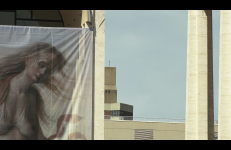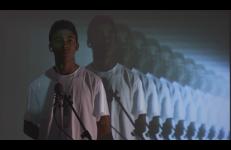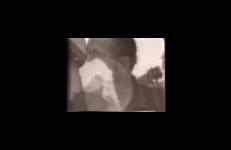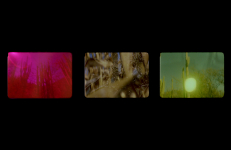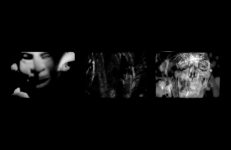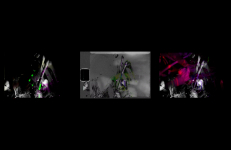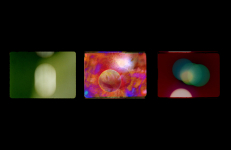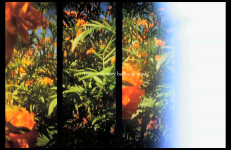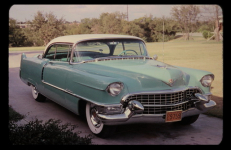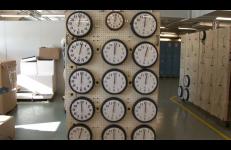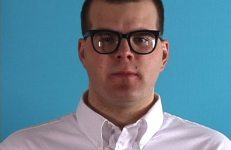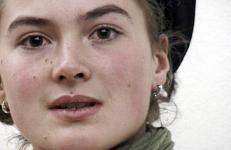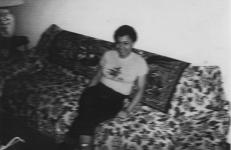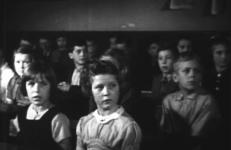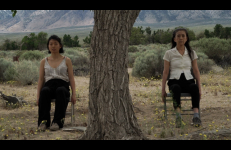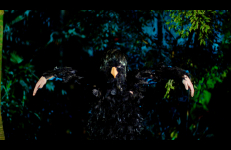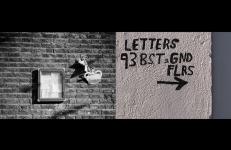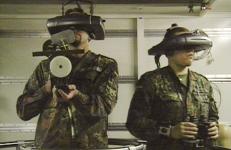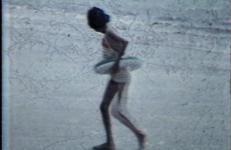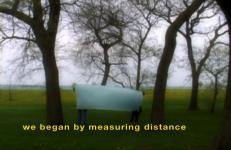Three Tales was commissioned in the late 1990s by different international music festivals to reflect on 20th century life as the new century approached. It recalls three well known events from the early, middle, and late 20th century—Hindenburg, Bikini, Dolly. Each of these events reflects on the growth and implications of technology during the 20th century from early air transport to the current ethical debate on the future of our species.
History
The 1949 Housing Act, often seen as the beginning of urban renewal, reshaped the landscapes of many American cities. One of the nation’s largest urban renewal projects was the Lincoln Square Title I Project in New York City led by the powerful public official Robert Moses, which created Lincoln Center for the Performing Arts along with Fordham University’s Manhattan Campus and middle- to high-income housing. The area selected for the project was a working-class, predominantly Black neighborhood with a large population of Puerto Ricans.
Transmission from the Liberated Zones is an experiment which brings together Swedish statements and documents, accessed and presented by a boy through a low-fidelity feedback channel — an optical dimension created to move through time, and between tepid and tropic encounters.
This tape was shot in August 1972 by the same crew that had convened for pioneer video collective TVTV’s (Top Value Television) project Four More Years. Videotaped at the 1972 Republican Convention, it begins with the cameraman taping from inside the press area, with protestors from the People’s Band outside at the fence. There is footage of girl- and boyscout groups. A group of protestors are shown calling for non-violent blockades of the delegates' entrance. Tear gas is feared, and there are interviews with tear-gassed people and medics.
La Trinchera Luminosa del Presidente Gonzalo is a recreation of one day at the Canto Grande prison in Peru, following women guerrillas from the Maoist Shining Path movement, from their morning marches to their bedtime chants. Kept isolated in their own cellblocks, the guerrillas refused to acknowledge that they were imprisoned. Their cellblocks were just another front in the People’s War: “shining trenches of combat”. This film shows the intense indoctrination and belief system of the brutal Latin American insurgency.
The projection and screens in this installation are access points meant to connect the present to an ancestral past. Evoking the ritualism of Aztec cosmology, this experience recalls lumbreras – circular excavation holes in archeological sites, such as the recently found Tzompantli (skulls ceremonial rack) at the Templo Mayor in Tenochtitlan (Mexico City). The use of obsidian crystal as a nuclear filter in the chamber is also essential.
The projection and screens in this installation are access points meant to connect the present to an ancestral past. Evoking the ritualism of Aztec cosmology, this experience recalls lumbreras – circular excavation holes in archeological sites, such as the recently found Tzompantli (skulls ceremonial rack) at the Templo Mayor in Tenochtitlan (Mexico City). The use of obsidian crystal as a nuclear filter in the chamber is also essential.
The projection and screens in this installation are access points meant to connect the present to an ancestral past. Evoking the ritualism of Aztec cosmology, this experience recalls lumbreras – circular excavation holes in archeological sites, such as the recently found Tzompantli (skulls ceremonial rack) at the Templo Mayor in Tenochtitlan (Mexico City). The use of obsidian crystal as a nuclear filter in the chamber is also essential.
The projection and screens in this installation are access points meant to connect the present to an ancestral past. Evoking the ritualism of Aztec cosmology, this experience recalls lumbreras – circular excavation holes in archeological sites, such as the recently found Tzompantli (skulls ceremonial rack) at the Templo Mayor in Tenochtitlan (Mexico City). The use of obsidian crystal as a nuclear filter in the chamber is also essential.
The film suggests a link between three political figures from the history of Mexican resistance: the Soldadera (woman guerrilla fighter), the Zapatista (member of the Zapatista Army of National Liberation), and the Normalista (students from the Ayotzinapa Normal School).
Slides of Cadillacs owned by the artist’s father are the vehicles of this family history. The slides represent twenty-eight years of Dr. McDonald’s love affair with Cadillacs, averaging two new cars every two years: one for himself and the other for his wife Dorothy. Starting in 1949, the cars were artfully photographed by Laurie’s father with a beloved Leica IIIG. The setting was the family living room; also present were the artist's two sisters, Suzie and Martha, their mother, and Suzie's husband Dan. Dr.
What do a luxury automobile, a cymbal, and a wall clock all have in common? What are the diverse attachments and experiences produced by those who make these things and those who consume them? What exchanges take place through the object itself—sensually, esthetically, abstractly? We often forget that most of the things we use are made by the labor of others, often in distant places, living dramatically different, diverse lives. What do these objects mean to them? How does their labor, their aspirations, their sense of alienation or satisfaction connect to ours?
This video is a 7-minute single channel piece consisting of two monologues: the first is a speech prepared for Richard Nixon in the event of a moon landing disaster in 1969, the second is the final words of the computer HAL from the film 2001.
This title is only available on Suitable Video, Volume 1.
Produced in former Yugoslavia (Bosnia-Herzegovina, Croatia, Macedonia, Serbia & Montenegro, Slovenia), Austria, USA, Canada, 1999-2003.
Vanessa is based on the untimely death of Vanessa Jordan. A work about loss and Michelangelo.
This title is only available on Broad Daylight and Other Times: Selected Works of Kevin Jerome Everson.
Filmed entirely in Sweden, VIEWFINDER is a surreal sound-film that entangles gestures of place, belonging, and monument. Informed by archival research, oral history, and folk stories, the film focuses on Black immigrants who have recently migrated to Sweden. These performers enact dance-like choreographies in critical sites across the coastal town of Varberg, generated in response to an absence of Black life found in the municipal archives.
A re-working of Humphrey Jenning's 1943 seminal docu-drama The Silent Village wherein coal miners from the Welsh village of Cwmgiedd re-enact the Nazi invasion and annihilation of the resisting Czech villagers of Lidice. Principal focus in this re-mix is upon the way sound is used as a mode of social control.
On April 30, 2019, Eiko and Alexis Moh, one of Eiko's collaborators in The Duet Project, visited the Manzanar Historical Site. Manzanar was one of ten American internment camps where over 110,000 Japanese Americans were incarcerated during the World War II. At the peak (in September 1942), 10,046 Japanese Americans were forced to live in Manzanar.
This video was shot two days after Manzanar Pilgrimage commemorated its 50th anniversary on site.
A documentary fiction inspired on the first accounts of the natural and ethnographic explorations in America by colonizers, missionaries, and scientists. Shot in the Tropical Greenhouse of Lille, France, the film uses both the architecture and the plants of this enclosed botanic garden as narrative supports for an exploratory journey. Led by the voice-over of an explorer, the film explores the notion of exoticism, evokes the violent origins of the so-called "New World" and the endurance of the imagery they engendered.
A Walk with Nigel is a video essay that constructs a dialogue between two artists from two different times, between movement and stillness, between speech and silence. An archaeological study of a community, reawakening the archive in the present. A materialist study of streets and social relations.
Since the Gulf War in 1991, warfare and reporting it have become hyper-technological affairs, in which real and computer-generated images cannot be distinguished any more. With the aid of new and also unique archive material, Farocki sketches a picture of the relationship between military strategy and industrial production and shows how war technology finds its way into everyday use.
-- International Film Festival catalogue, Rotterdam (2004)
In the fall of 1986, Richard Fung made his first visit to his father’s birthplace, a village in southern Guangdong, China. This experimental documentary examines the way children of immigrants relate to the land of their parents, and focuses on the ongoing subjective construction of history and memory. The Way to My Father's Village juxtaposes the son’s search for his own historical roots, and his father’s avoidance of his cultural heritage.
Long still frames, text, language, and sound are weaved together to unfold the narrative of an anonymous group who fill their time by measuring distance. Innocent measurements transition into political ones, examining how image and sound communicate history. We Began by Measuring Distance explores an ultimate disenchantment with facts when the visual fails to communicate the tragic.
Produced by The Sharjah Biennial Production Programme.
The story of the anti-Vietnam War movement from the perspective of James R. Roebuck, the first African American president of University of Virginia’s Student Council. Over a ten-day period of unprecedented student upheaval in 1970, Roebuck confronted a series of political challenges and existential dilemmas. This budding activist and future U.S. representative was the quintessential militant insider whose cool temperament and ideological flexibility proved quite useful as UVA appeared on the verge of imploding from within.
The story of the anti-Vietnam War movement from the perspective of James R. Roebuck, the first African American president of University of Virginia’s Student Council. Over a ten-day period of unprecedented student upheaval in 1970, Roebuck confronted a series of political challenges and existential dilemmas. This budding activist and future U.S. representative was the quintessential militant insider whose cool temperament and ideological flexibility proved quite useful as UVA appeared on the verge of imploding from within.





